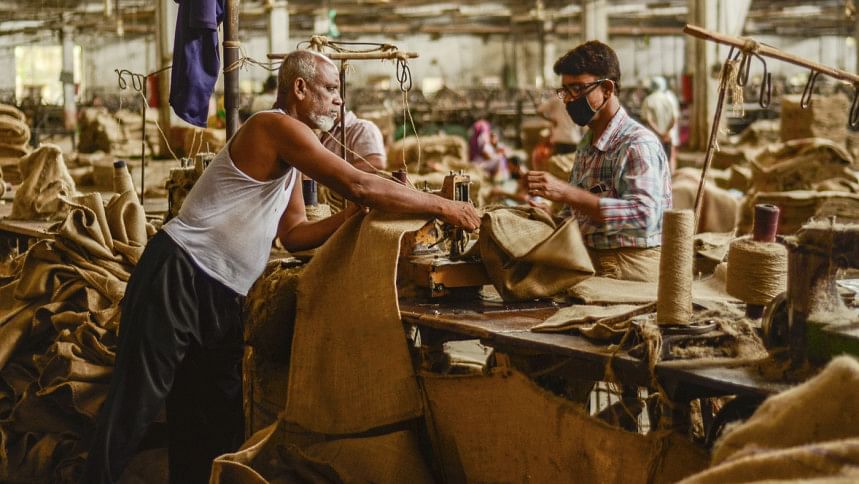Bangladesh to question India's countervailing duty on jute

Bangladesh is going to defend its position and question India's logic in imposing countervailing duty (CVD) on jute and jute goods from Bangladesh to India, said Senior Commerce Secretary Tapan Kanti Ghosh yesterday.
A team from the commerce ministry is going to attend a consultation meeting to be held at the office of the Director General of Trade Remedies (DGTR) in New Delhi on October 30 regarding the imposition of CVD on Bangladeshi jute and jute goods, Ghosh told The Daily Star by phone.
The team will mainly highlight that Bangladesh's subsidies in the jute and jute goods industry do not hamper the Indian jute and jute goods sector, according to its primary investigation.
For instance, India said Bangladesh gives subsidies in jute and jute goods sectors to factories housed inside Export Processing Zones (EPZs).
But no jute and jute goods factory is located inside EPZs, the senior commerce secretary said.
Moreover, since there is already an anti-dumping duty (ADD) imposed on jute in India, it would not be right to fix CVDs on the same goods in the same market, he added.
On August 4, the Indian government sent a letter to the commerce ministry of Bangladesh, seeking a meeting with Ghosh as part of their investigation.
India started an investigation to levy CVD as it thinks its domestic jute industry is being hurt by subsidies provided by Bangladesh.
CVDs are tariffs on imported goods that are imposed to offset subsidies given by the exporting country's government while ADDs are protectionist tariffs that a domestic government imposes on foreign imports that it believes are priced below fair market value.
The Indian Jute Mills Association (IJMA) complained to the DGTR that Bangladesh's subsidies on jute and jute goods had been affecting the Indian jute industry.
The DGTR is a quasi-judicial body that independently undertakes investigations before making its recommendations to the Indian central government.
Currently, Bangladesh gives a 12 percent cash incentive on the export of jute goods such as hessian and sacks and a 7 percent incentive on jute fibres like yarn and twine. A 20 percent subsidy is extended against the export of carbon and jute particle boards produced from the natural fibre.
In its letter, the IJMA mainly indicated that the export of a large volume of Bangladeshi-made jute sacks, which are used in the packaging of rice, and similar bags, is affecting its jute industry.
The association informed the DGTR that Bangladesh is giving a lot of subsidies for the import of capital machinery used by the jute industry. The cash incentives and subsidies are making Bangladesh's jute and jute goods industry more competitive and are affecting the Indian jute industry, it said.
Earlier, Bangladesh proposed several times that India refrain from retaining any ADD once it ceases on December 31.
Commerce Minister Tipu Munshi, during his visit to India in December last year, called for the removal of the ADD.
In response, India said the first 200,000 tonnes of Bangladeshi jute and jute goods annually would be allowed to enter the country duty-free but any additional amount would be subject to duties.
Jute and jute goods shipments to India stumbled due to the ADDs, which range from 5 percent to 30 percent.
In 2017, India imposed ADDs ranging from $19 to $352 per tonne on jute exported from Bangladesh for five years. It renewed the measure in 2022.
In October last year, the DGTR recommended its finance ministry reimpose the ADD for another five years, prompting Bangladesh to initiate discussions with exporters to determine the next course of action.
Bangladesh has enjoyed duty-free access to India for all goods except 24 alcoholic and beverage items under the South Asian Free Trade Agreement since 2011. As a result, exports to the country are growing steadily.
Garment items shipped from Bangladesh to India face a 12.50 percent CVD.

 For all latest news, follow The Daily Star's Google News channel.
For all latest news, follow The Daily Star's Google News channel. 








Comments